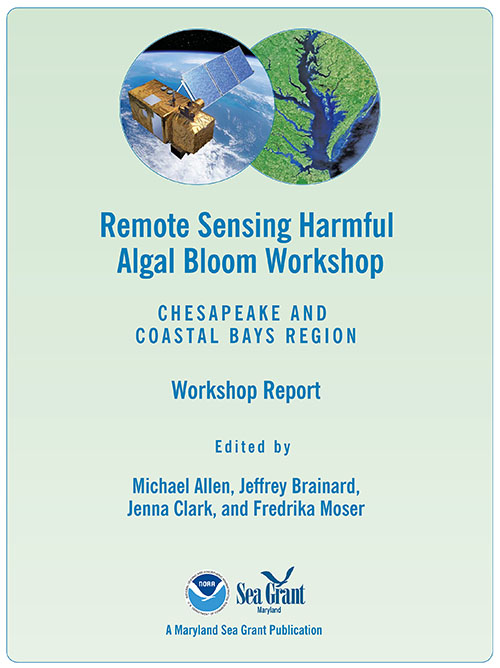Knauss legislative fellowships in Congress help build careers — and they're fun and educational. See our video and fact sheet for details.
Workshop on Remote Sensing of Harmful Algal Blooms
 Sponsored by Maryland Sea Grant and the National Oceanic and Atmospheric Administration’s National Centers for Coastal Ocean Science (NOAA NCCOS)
Sponsored by Maryland Sea Grant and the National Oceanic and Atmospheric Administration’s National Centers for Coastal Ocean Science (NOAA NCCOS)
Date: Thursday, May 1st, 2014
Place: O'Callaghan Annapolis Hotel, 174 West Street, Annapolis, MD
Workshop participants were invited from a variety of communities including local government, academia, and private industry.
A final technical report from the workshop is available for download.
Goals of the Workshop
- To explore the potential application of remote sensing technologies to improve our regional capabilities to forecast the spatial and temporal distributions of cyanobacteria blooms in the Chesapeake Bay and in coastal bays in Maryland and Virginia.
- To help develop federal-state partnerships for improving the monitoring and forecasting of harmful algal blooms in these areas.
- To provide guidance to NOAA NCCOS for developing remote sensing models and delivering appropriate products for specific user groups in the region.
- To identify a strategy for incorporating HAB remote sensing products into the existing HAB monitoring and management process.
The workshop included presentations, discussions, and hands-on demonstrations to evaluate possible remote sensing tools. For additional information on the structure of the workshop, please review our agenda.
The Role of NOAA NCCOS
NOAA NCCOS has been working to understand and predict harmful algal bloom (HAB) dynamics in regions throughout the country. The office has conducted research to develop and operationalize remote sensing products for monitoring and forecasting the movements of specific HAB species of concern. These products have been applied to several different areas including Lake Erie, Florida, and the West Coast.
Workshop Materials
The following materials were distributed to all attendees for background and reference.
- Workshop Agenda
- Pre-workshop Needs Assessment Survey Summary: A summary of the pre-workshop survey of potential attendees conducted in February 2014.
- Harmful Algae in the Chesapeake and Coastal Bays of MD and VA: An overview of the different algae species in the region and depictions of historical blooms.
- Harmful Algal Bloom Management: An overview of the MD and VA management and procedures of harmful algae bloom occurrences.
- Remote Sensing Harmful Algal Blooms Potential Products: An example and overview of potential remote sensing products that are available to the Chesapeake and coastal bays region.
- Experimental Cyanobacteria Health Bulletin: Example bulletin created for Florida. This is to show an example product that could be provided to this region.
- Experimental Lake Erie Harmful Algal Bloom Bulletin: Example bulletin created for Lake Erie. This is to show an example product that could be provided to this region.
- Attendee List: Contact information for all attendees.
Learn More
See a Maryland Sea Grant news article about this workshop.





